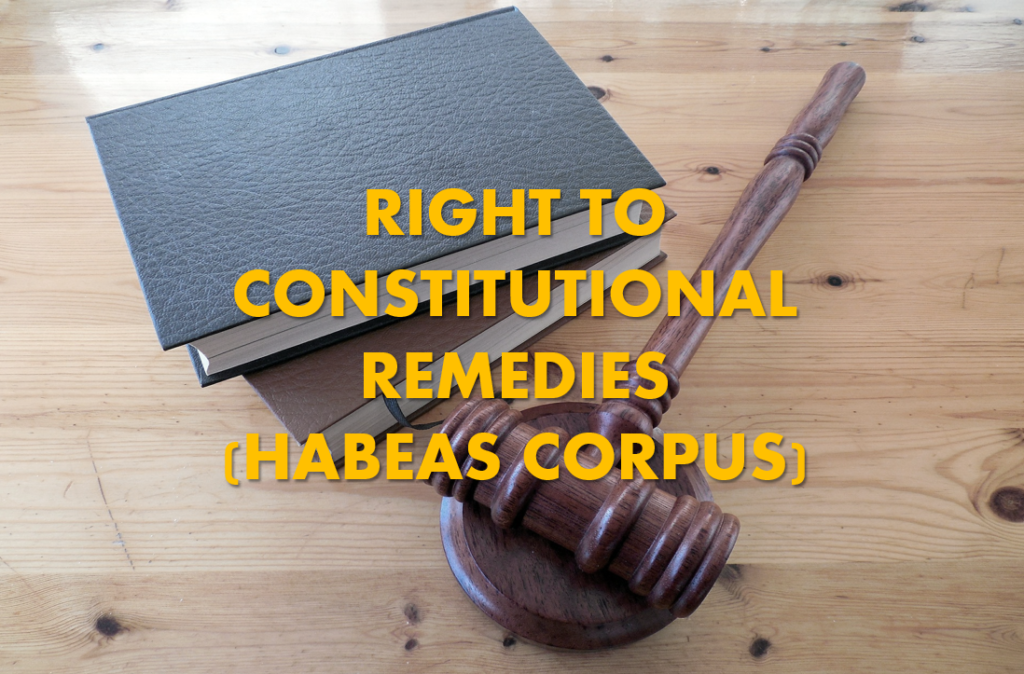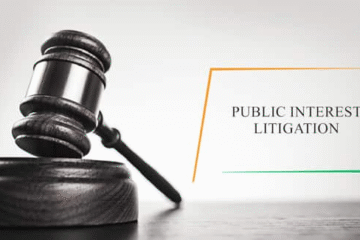
A mere declaration of fundamental rights in the constitution is meaningless, unless it is provided with effective machinery for their enforcement. Prerogative remedies are provided through writs. Provision related to writs are made under Article 32 and 226 of the constitution of India.
The writs are borrowed from English law where they are known as ‘prerogative writs’, for they have originated in the king’s prerogative power, who was, and is still described as the ‘fountain of justice’.
The right to get fundamental rights protected is itself a fundamental right( Assam public works v. Union of India, AIR 2015 SC 783), that is why Dr. Ambedkar called Article 32 the most important article of the constitution- ” an article without which this constitution will be nullity”. It is the very soul and very heart of the constitution. Supreme court in Kihota Hollohan v. Zachillhu, (AIR 1993 SC 412) has ruled that Judicial review under article 32 and 226 is a basic feature of the constitution beyond the pale of amenability. It contain the following four provisions:
(a) The right to move the supreme court by appropriate proceedings for the enforcement of the Fundamental Rights is guaranteed.
(b) The supreme court shall have power to issue directions or orders or writs including writs in the nature of habeas corpus, mandamus, prohibition, quo warranto and certiorari, whichever may be appropriate for the enforcement of any of the fundamental rights.
(c) Restriction or abrogating the application of fundamental rights to members of armed forces, police forces, etc
(d) Indemnifying any government servant or any other person for any act done during the operation of martial law in any area.
Only the fundamental rights guaranteed by the constitution can be enforced under Article 32 and not any other right like non-fundamental constitutional rights, statutory rights, customary rights and so on. The violation of a fundamental right is the sine qua non for the exercise of the right conferred by Article 32. In other words, Articles 32 can only be invoked where there is question related to violation of fundamental rights.
Writs – Types And Scope
The supreme court (under Article 32) and high court (under Article 226) can issue the writs of habeas corpus, mandamus, prohibition, quo warranto and certiorari, further Parliament under Article 32 can empower any other court to issue such writs. As no such provision has been made yet, only Supreme court and high court can issue writs.
Habeas Corpus
It is a Latin term which literally means ‘to have the body of’. It is a process by which an individual who has been deprived of his personal liberty by any executive act, may have the validity of such act tested before superior court. In other words, it is an order issued by the court to a person who has detained another person, to produce the body of the latter before it. The court then examines the case and legality of detention. If the detention is illegal, then the detained person will set free. Thus Habeas Corpus is a bulwark of personal liberty. The writs of habeas Corpus can be issued against both private and public authorities.
In Ummu Sabeena v. State of Kerala, (2011) 10 SCC 781, The most effective way of doing the duty to safeguard the liberty not only of the citizens but also the persons within the territory of India is by exercising the power by the court by issuing a writs of Habeas Corpus safeguarding the liberty.
The writ, on the other hand, is not issued where the:
(i) detention is lawful,
(ii) the proceeding is for contempt of a legislature or a court,
(iii) detention is by a competent court, and
(iv) detention is outside the jurisdiction of the court.
The supreme court cannot give any direction to the Pakistani authorities as it has no jurisdiction over them(Gopal Das v. Union of India, (2011) 4 SCC 300 (301)).
A writs of Habeas Corpus is not entertained when a person is committed to judicial custody or police custody by the competent court by an order which prima facie does not appear to be without jurisdiction or passed in an absolutely mechanical manner or wholly illegal(Manubhai Ratilal Fatel v. State of Gujarat,(2013) 1 SCC 314 (326).
Object
The main aim of the Habeas corpus is to provide for a swift judicial review of alleged unlawful restraint on liberty.(Carafar v. Lavalee, 391 US 234). The objective of Habeas Corpus is to release a person from illegal detention not to punish the detaining authority.
Who may apply?
An application for habeas Corpus can be made by any person on behalf of the prisoner as well as the prisoner himself. Even a letter mentioning illegalities committed on prisoners in jail can be admitted (Sunil Batra(II) v. Delhi Administration, AIR 1980 SC 1579).
Courts can act suo motu in the interests of justice; on any information conveyed to it by any one. (Ram Kumar v. District Magistrate, Delhi, AIR 1966 Punj 51)
Procedure
Every application for a writ of Habeas Corpus has to be accompanied by an affidavit stating the nature and circumstances of the detention. If the court is satisfied with the Prima facie case, it may grant the release. If not then court calls upon the opposite party to show cause on a specified day and pass order on the merit of the case.
If the court is of the opinion that the detention is unjustified, the court will issue writ for the immediate release of the detained person.
Habeas Corpus – widen scope
Traditionally habeas Corpus has been used to get a person released from illegal detention. However, in Sunil Batra II v. Delhi administration, a convict had written a letter to one of the judges of the Supreme court alleging inhuman torture to a fellow convict.
Krishna lyer, J. Opened new scope of Habeas Corpus by treating this letter as a petition of Habeas Corpus. The Supreme court has widened its scope by giving relief through the writ against inhuman and cruel treatment meted out to prisoners in jail. Thus, the court has allowed the use of writ for protecting the various personal liberties which are guaranteed to the arrested persons or prisoners under the law and the constitution.




0 Comments